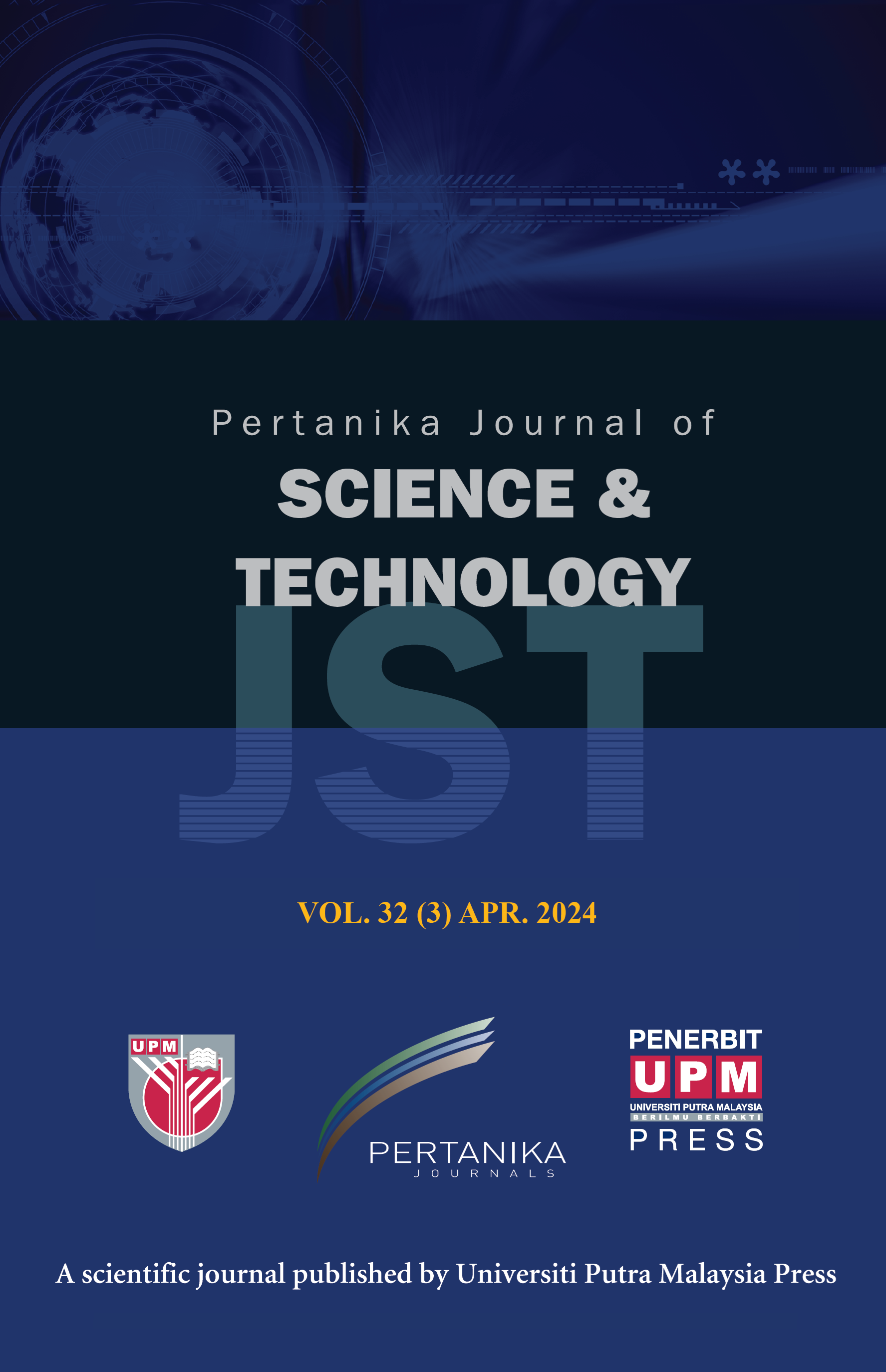PERTANIKA JOURNAL OF SCIENCE AND TECHNOLOGY
e-ISSN 2231-8526
ISSN 0128-7680
Distribution and Population Abundance of Odonates in Relation to Abiotic Factors in an Urbanized Freshwater Ecosystem: A Case Study from Universiti Sains Malaysia
Nur Aina Alisa Adnan, Azimah Abd Rahman, Nur Faeza Abu Kassim and Nurhafizul Abu Seri
Pertanika Journal of Science & Technology, Pre-Press
DOI: https://doi.org/10.47836/pjst.33.4.12
Keywords: Abiotic, ArcGIS, biotic, damselflies, dragonflies, Hydrilla verticillate, odonate
Published: 2025-07-04
Odonates, including dragonflies and damselflies, serve as critical bioindicators of freshwater ecosystem health due to their sensitivity to environmental fluctuations. This study examines the distribution and abundance of odonates at Universiti Sains Malaysia, with a particular focus on assessing population abundance and identifying key biotic and abiotic factors influencing their distribution. Over a nine-week sampling period, a total of 1,256 individuals were recorded, comprising four dragonfly species Brachythemis contaminata, Brachydiplax chalybea, Orthetrum testaceum, and Crocothemis servilia and one damselfly species, Ischnura senegalensis. A hotspot analysis conducted using ArcGIS identified Sampling Station 2 (SS2) as a primary aggregation zone, accounting for 69.82% (877 individuals) of total odonate observations, largely attributed to its proximity to water bodies. The presence of Hydrilla verticillata emerged as a crucial factor in determining habitat suitability; however, its degradation due to algal blooms at SS1 and SS2 was associated with a decline in odonate abundance, particularly among species reliant on healthy aquatic vegetation. Statistical analysis revealed a moderate positive correlation between odonate abundance and abiotic parameters such as air temperature (r = 0.544, p < 0.001), relative humidity (r = 0.400, p = 0.008), and wind speed. However, multiple regression analysis indicated that only relative humidity (p = 0.009) and air temperature (p = 0.024) significantly influenced odonate abundance, while wind speed (p = 0.064) did not exhibit a statistically significant effect. Future research is recommended to investigate additional abiotic and biotic factors to further refine our understanding of odonate ecology and their role in freshwater ecosystem health assessment.
ISSN 0128-7702
e-ISSN 2231-8534
Share this article

